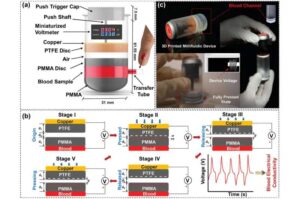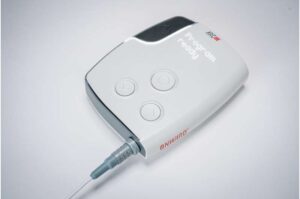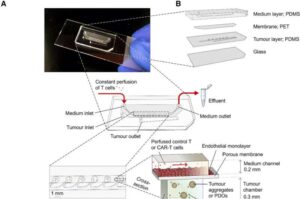
MIT engineers design tiny batteries for powering cell-sized robots
These zinc-air batteries, smaller than a grain of sand, could help miniscule robots sense and respond to their environment.

These zinc-air batteries, smaller than a grain of sand, could help miniscule robots sense and respond to their environment.

In the age of technology everywhere, we are all too familiar with the inconvenience of a dead battery. But for those relying on a wearable health care device to monitor glucose, reduce tremors, or even track heart function, taking time to recharge can pose a big risk.

Researchers have developed a “blood vessel-on-a-chip” for heart disease with the potential to change the future of drug testing and development. The technology could also reduce our reliance on animal testing.

Researchers at the University of Pittsburgh and University of Pittsburgh Medical Center are proposing a new device that uses blood to generate electricity and measure its conductivity, opening doors to medical care in any location.

Caption:MIT engineers found a way to eliminate the buildup of scar tissue around implantable devices, by coating them with a hydrogel adhesive. The material binds the device to tissue and prevents the immune system from attacking the device.

More than 40 people suffering from paralysis from the neck down regained partial control of their arms and hands thanks to a relatively simple to use device, a large study said Monday.

How do tumors react to a certain therapeutic approach? Knowing this before the start of a therapy would be of enormous value for people suffering from cancer as well as for the doctors treating them.

The 3D printed PEEK implants using the EXT 220 MED were successfully demonstrated in nearly 40 cranioplasties across Europe in recent months says the company.

Scientists have designed a solar panel-like pacemaker that can precisely control heartbeats.

Nevro1™ Proven to Immediately Transfix Sacroiliac (SI) Joint to Allow for Long-term SI Joint Fusion